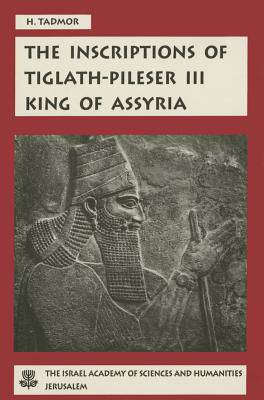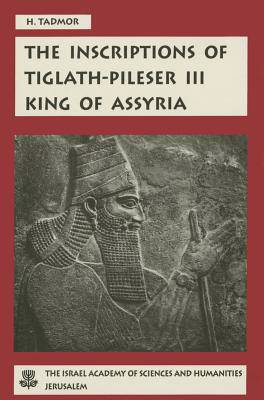
- Afhalen na 1 uur in een winkel met voorraad
- Gratis thuislevering in België vanaf € 30
- Ruim aanbod met 7 miljoen producten
- Afhalen na 1 uur in een winkel met voorraad
- Gratis thuislevering in België vanaf € 30
- Ruim aanbod met 7 miljoen producten
Zoeken
The Inscriptions of Tiglath-Pileser III, King of Assyria
Critical Edition, with Introductions, Translations and Commentary
Hayim Tadmor
€ 120,95
+ 241 punten
Omschrijving
Assyrian royal scribes kept detailed records of the epoch-making campaigns and achievements of Tiglath-pileser III (r. 745-727 BCE), founder of the Neo-Assyrian Empire. The fragmentary remains of these inscriptions were discovered at Nimrud in 1845, but most of them were lost or reburied, leaving later scholars to rely on critically flawed editions. In preparing his new edition, Hayim Tadmor returned to first-hand copies of the texts, many of them prepared at the site. Their evidence is supplemented by related inscriptions discovered at Nimrud and elsewhere. The transcribed Akkadian text is accompanied by a critical apparatus, an English translation and an extensive philological and historical commentary. The introductory material, excursuses and supplementary studies treat a panoply of scholarly issues relating to the texts, including their historical and biblical context. Copious plates show the cuneiform texts in full and illustrate their positions in the original settings.
Specificaties
Betrokkenen
- Auteur(s):
- Uitgeverij:
Inhoud
- Aantal bladzijden:
- 333
- Taal:
- Engels
- Reeks:
Eigenschappen
- Productcode (EAN):
- 9789652081759
- Verschijningsdatum:
- 31/12/1994
- Uitvoering:
- Hardcover
- Formaat:
- Genaaid
- Afmetingen:
- 183 mm x 269 mm
- Gewicht:
- 1202 g

Alleen bij Standaard Boekhandel
+ 241 punten op je klantenkaart van Standaard Boekhandel
Beoordelingen
We publiceren alleen reviews die voldoen aan de voorwaarden voor reviews. Bekijk onze voorwaarden voor reviews.











